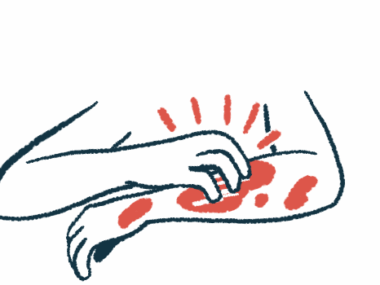Scenesse may gain orphan drug status for variegate porphyria in EU
Approved in Europe, US for light sensitivity in erythropoietic protoporphyria
Written by |

A European Medicines Agency (EMA) committee has recommended that Scenesse (afamelanotide) be designated an orphan drug for the treatment of light sensitivity in people with variegate porphyria (VP).
The implantable medication by Clinuvel is approved in the U.S. and European Union (EU) to treat people with erythropoietic protoporphyria (EPP) who have a history of toxic reactions to sunlight. It is not approved in these regions for VP, but Clinuvel is working to expand Scenesse’s indication.
Orphan drug designation in the EU is granted to medications that are intended to treat, prevent, or diagnose life-threatening or chronically debilitating rare diseases, defined as those affecting no more than 5 in every 10,000 people.
The status offers regulatory support and financial incentives to accelerate the therapy’s development, including 10 years of market exclusivity should it eventually be approved. The European Commission will make the final call on this designation for VP, after considering the committee’s opinion.
Scenesse an orphan drug in US for VP and other cutaneous porphyrias
Scenesse also holds orphan drug status for the treatment of cutaneous forms of porphyria, including variegate porphyria, in the U.S.
“The use of SCENESSE in EPP has become standard of care, as seen from demand for treatment year on year,” Dennis Wright, PhD, Clinuvel’s chief scientific officer, said in a company press release.
“The strategy to expand the existing label to include other porphyrias is demand driven, as patients and physicians request our photoprotective treatment,” Wright said.
In porphyria, the production of heme — the molecule that helps blood cells carry oxygen — is disrupted due to disease-causing genetic mutations, leading to a deficiency in enzymes involved in the production process. Intermediate molecules called porphyrins accumulate to toxic levels in the skin, liver, and other organs.
Photosensitivity is common to several types of porphyria, including VP and EPP. These patients experience painful reactions, blistering, and skin fragility upon being exposed to sunlight due to light-activated porphyrins in the skin.
The active ingredient in Scenesse is afamelanotide, an antioxidant molecule that boosts the production of melanin, the brown-colored pigment that protects the skin from damage upon exposure to the sun’s ultraviolet rays. It is designed to ease painful reactions to sunlight in photosensitive porphyria patients.
In EPP patients, the medication is delivered via an implant inserted under the skin and replaced once every two months.
Adults with variegate porphyria showed benefits in a Phase 2 trial
The committee’s recommendation to grant Scenesse orphan drug status for VP was supported by findings from a recently completed, open-label Phase 2a clinical trial (NCT05854784) involving six adults with variegate porphyria, ages 18-70, who had porphyria-related skin symptoms.
All participants were implanted with Scenesse (16 mg) once a month for about six months, for a total of six doses. The main goal was to evaluate changes in clinician-evaluated disease severity, as assessed by the Clinical Global Impression of Change (CGIC) tool.
Results, announced by Clinuvel in March, showed that all six patients saw an easing in disease severity, with CGIC scores improving up to three times relative to the trial’s start (baseline). On average, the change was rated as “much improved.”
The median number of skin lesions on light-exposed areas also decreased over time, falling from 10.5 lesions at baseline to three during treatment. All patients showed a lessening in skin fragility upon sun exposure.
Patients also reported gains in the amount of time they could spend in the sun with treatment, with a 24% median increase in the number of days spent outdoors. Improvements in life quality and the ability to perform daily activities also were noted.
Scenesse was well tolerated, with side effects generally being consistent with the medication’s known safety profile in other patient groups.
The EMA committee determined that these findings were sufficient proof-of-concept for Scenesse’s efficacy in VP. Clinuvel also noted the committee took into account the high unmet medical need and lack of alternative therapies for VP, as well as its successful use in EPP, which has clinical overlap with VP.






